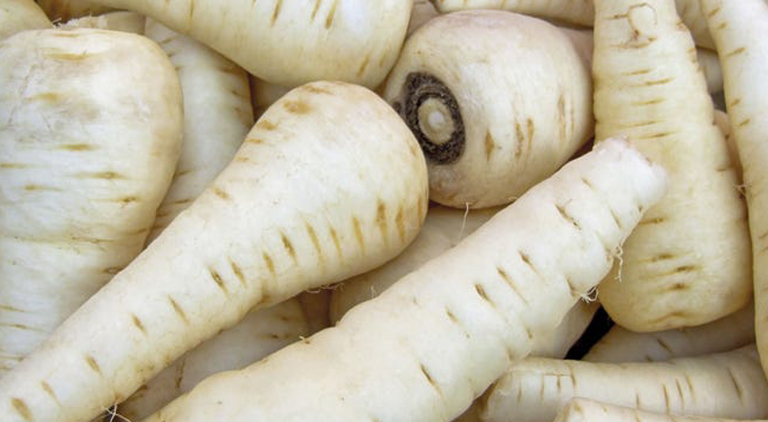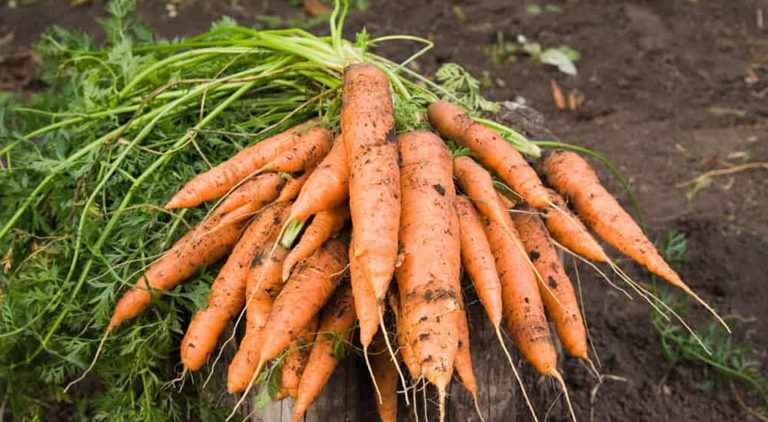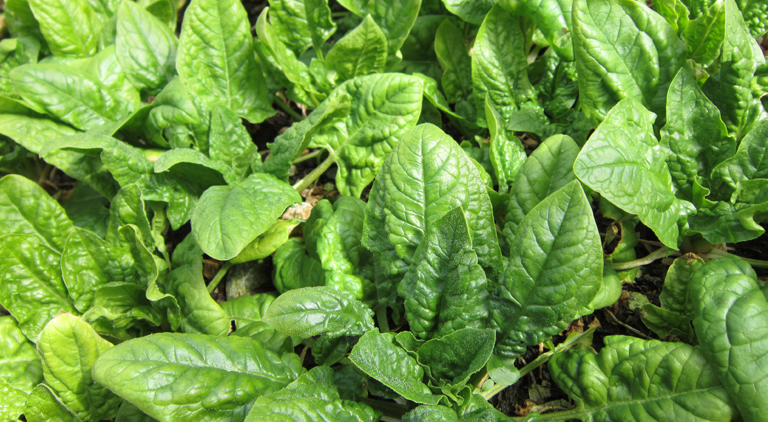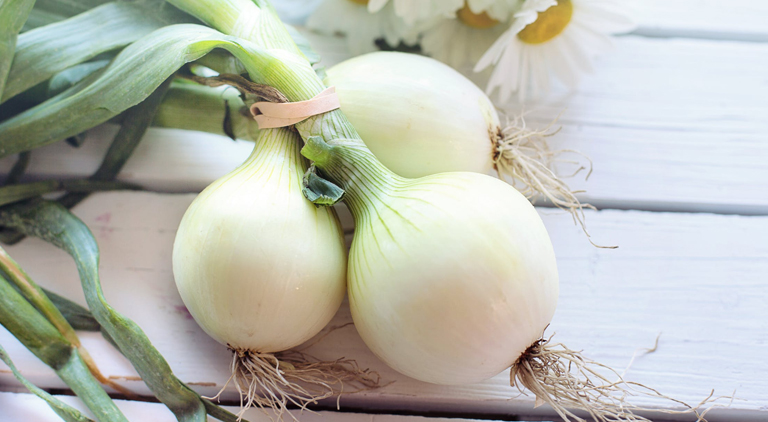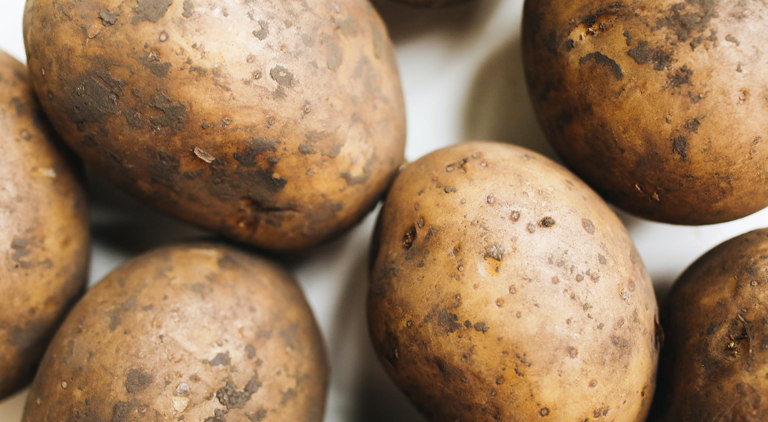
Spring is in sight, but Covid restrictions are set to last until the summer. Many of us will retreat to our lockdown gardens in the coming weeks. Today, Agridirect chooses the 5 best vegetables to plant in your outdoor beds this year.
The staple of the Irish diet before the arrival of the potato, the humble parsnip deserves a patch of ground in every garden. Appreciated at dinner time for its soft texture and homely, aromatic flavour, the parsnip is likely to reward the efforts of the amateur gardener. Parsnips will grow in most Irish soil types without much attention. In fact, the hard part is getting the seeds to germinate.
While seed packets may advise that you sow as early as February, Irish soil at this time of year is usually too wet for the tiny seeds. Consider holding off until the warmer weather sweeps across the country in late March, April or even May.
If we end up with tropical heat in these months, as in 2020, don’t forget to water your seedlings well during the first weeks after germination.
Sowing tip: Sow your seeds on a bed of soil, about 6 inches apart in rows an inch deep. Cover with soil and sprinkle with water. Rows should be about 1 foot apart, to allow space for the width of the parsnip heads at maturity.
Cooking tip: With their soft, homey texture and sweet aroma, parsnips are the perfect vegetable for hearty winter meals. They are also easy to prepare. Just peel away the tough, outer skin and cook as you like. Try chopping some into a lamb or beef stew on a cold day in the final 3 months of the year!
The ideal dinner plate companion for parsnips, carrots are a popular crop for outdoor growing in Ireland. In fact, many may protest that this versatile root vegetable deserves a higher position on our list. And there is merit in the argument. Carrots are a superfood, and are particularly rich in vitamin A. When harvested in time, they are also deliciously sweet. This makes them a favourite dinner time vegetable for kids!
But carrots do come with a hitch for the hobby gardener. They are devilishly tricky to grow and may not be the best choice for the beginner. Very often, inexperienced gardeners are appalled when they lift their lush carrot stalks to find small, pale, tendril-like roots. If you have this experience, it is important to not feel disheartened. While they require more attention than the other crops on this list, it is possible to grow excellent outdoor carrots in Irish soil. Ask yourself what you did wrong, and learn from the experience.
To increase your chances of getting a successful carrot crop, ensure that soil is loose before sowing, that the growing crops have adequate water, and that you leave enough space between each plant.
Be wary, too, of using very fresh manure as a fertilizer, as this may cause your carrots to fork. Instead, use year-old manure that is well broken down.
Sowing tip: Set aside your best available ground for carrots. You want deep soil, free from stones and other solid objects that might hinder root growth. As with parsnips, you should sow at a depth of approx. 1 cm. Thin the crop while still young, if necessary!
Cooking tip: While carrots are perfect in stews, soups and as a side for Sunday dinner, they are also delicious to eat uncooked. Try grating a couple of raw carrots for a summer salad. If you end up with a glut of them in the summer, consider making carrot cake. There are few deserts more enjoyable than a slice of iced carrot cake with a cup of strong coffee.
I never watched much of Popeye the Sailor Man, but he certainly understood his leafy greens! There aren't many vegetables with better credentials than spinach. A crop well-suited to Irish gardens, spinach can be sown at most times during the growing season (April to August). It will grow almost anywhere, and requires very little care once it has germinated. Spinach is also a healthy superfood. It has a very high iron content, and is believed to help in the prevention of hair loss! If you have a few too many drinks some lockdown weekend, try chewing on some spinach during the following days. With powerful antioxidant and anti-inflammatory properties, it might be the detox you need.
Sowing Tip: Sow spinach in trays between April and August, and keep indoors for the first couple of weeks after germination. Once the plants are strong enough, transplant to a patch in your vegetable garden. Be wary of planting large amounts though, unless you have a lot of mouths to feed. Spinach is inclined to bolt and run to seed very quickly!
Cooking Tip: Boiled, sweated or stir-fried, spinach is a tasty addition to any meal. I like to add it to a quiche filling. Simply sweat it with some finely chopped onions, a little garlic, and a diced courgette, before adding to a seasoned egg and cream mixture.
Few dishes can survive without them! The base flavour in so many of Irish meals, the onion is also easy to grow outdoors in this country. It helps that it is also a low-maintenance, high-yield garden vegetable. You can get dozens, or even hundreds of onions, from a fairly small patch of ground.
Like spinach, onions have powerful antioxidant properties, so keep them close by if you’ve been having a few too many late night sessions lately! Harvest your onions when the stalks start to turn yellow. After you lift them, you should leave them to dry in the sun for a couple of weeks, preferably under glass or polythene.
A polytunnel or sunroom is ideal for this. Once the stalks have become fully desiccated, try to string them up, French-style, using old baling twine. This is slow, finnicky work, but great fun too! Once your onions are strung in bunches of 7 or 8, hang them in a cool, dark place. You don’t need a larder or cellar for this.
My parents, who have been growing and storing excellent onions for over 20 years, usually store them in the garage. As long as rain and damp can’t get at them, they will be fine and should keep for several months. We use onions from our summer garden for Christmas stuffing!
Sowing tip: For best results, push your onion sets into the loose soil until only the tips are visible. Plant in a row, leaving 4 or 5 inches between sets. Rows should be spaced at least half a foot apart.
Cooking tip: Onions are an essential for almost every dish. If you want to try something different, slice your onion to make "rings". Dip the raw onion rings in a batter of flour and sparkling water, and deep fry until golden-brown. Deep fried onion rings are an excellent addition to a burger at barbecue time!
WARNING: You may find that your homegrown onions have a much higher sulphur content than their supermarket counterparts. Don’t be surprised if they bring more than a single tear to your eye when cutting!
Was it ever really in doubt? Since Sir Walter Raleigh - allegedly - brought it to Europe from the Americas in the 17th Century, the faithful spud has been the undisputed staple of the Irish diet. Its peerless nutritional value, exceptionally high yield, and compatibility with our shallow Irish soil, endeared it to the impoverished generations of the past.
Nowadays, the potato is synonymous with our little nation on the international stage. From boxty to potato bread to stew and colcannon, there is hardly a traditional Irish dish that does not include it. Fear of losing a crop to blight, the historical curse of the Irish potato-grower, should not deter us from planting our favourite vegetable. A coat of bluestone (copper sulphate) mixed with water should suffice to protect against the onset of the rotting disease.
There are also some great blight-resistant potato breeds available on the market. If you don’t feel like going to the effort of spraying your plants, you should avoid some of the popular, commercial varieties such as Roosters and Pinks. These are too susceptible to blight.
Looking elsewhere, we have enjoyed great success with Caras and Sarpo Miras in recent years. Sarpos, in particular, have the dry, floury quality that makes for excellent mash and culcannon. You won’t miss Roosters in the slightest!
Sowing tips: Not really much to say here. Potatoes will grow in just about all conditions. It’s what makes them winners! Turn a few sods of earth onto old manure using a spade or loy, bury your potato seeds underneath the clod, and wait for the stalks to appear. Shovel a layer of soil around the new stalks to prevent sunlight from greening the tubers. If you’re feeling a bit lazy, and don’t want to dig or plough a ridge, you can throw down a bed of manure using a grape, and bury your early potatoes in it. My father got a fine crop from this haphazard method more than once.
Cooking tip: Most Irish people love nothing better than buttery mash with a sprinkle of salt and pepper. If you are feeling adventurous, though, try some oven-cooked potatoes. They are tasty, and easy to make. Preheat a tablespoon of sunflower oil on a cooking tray. Put your peeled, diced potatoes onto the hot, oiled tray. Toss a little, until the potatoes are covered in oil, then sprinkle with a small amount of mixed herbs, and place in the oven at 200 °C. Turn with a spatula every five minutes until golden brown and cooked through. Sprinkle with salt and serve as a side!
Honourable Mentions:
Producing a top 5 garden vegetables, from a potential list of dozens of excellent crops, was no easy task. It was particularly difficult to exclude the following classics, which you should also consider growing in your lockdown garden:
Cabbage: A brilliant vegetable, favourite of rabbits and hares, that requires little attention post-germination. Boil or sweat some cabbage and add to milky potatoes for a delicious Irish colcannon.
Leeks: Like the parsnip, the leek is a perfect winter crop, and is easy to grow. While many people include it as a soup ingredient, boiled leaks are also delicious in a creamy rue.
Beetroot: A superfood that is surprisingly straightforward to grow, beetroot is delicious boiled or raw. If you have good quality beetroot in your garden, try boiling, slicing, and pickling it in white vinegar. Pickled beetroot is one of the most delicious sides for a summer salad!
That's all, folks!
So that’s it for this week. If you are starting to plan your lockdown garden, drop us a line in the comments section and share your gardening thoughts and ideas. We would love to hear your top 5 garden vegetables! And please be sure to check back in with us next week, when we will be choosing our top 5 greenhouse vegetables for your lockdown garden. Enjoy the weekend, and happy gardening! MPG




